Archived – PhD, Residency and Fellowship Class Notes
Ph.D.
1974
Howard Young, Ph.D. ’74 (microbiology) received the inaugural Mentoring Award from the International Cytokine and Interferon Society for his many years in promoting and supporting research in cytokines and interferons throughout the biomedical research community.
1996
Edward Kelly, Ph.D. ’96 (biochemistry)
“Since graduating from biochemistry, I completed a post-doc in molecular toxicology in the lab of our graduate-school dean (David Eaton). I then had a brief foray into the Seattle biotech scene (Targeted Genetics) before returning to the UW, where I am now an associate professor of pharmaceutics in the School of Pharmacy. My research is focused on preclinical biology and drug safety testing, developing ex vivo models as alternatives to animal testing. This includes a project jointly funded by NIH and NASA to send our kidney ‘chip’ to the International Space Station, highlighted at the Northwest Kidney Centers’ annual gala.” See the accompanying video featuring Dr. Kelly.
2017
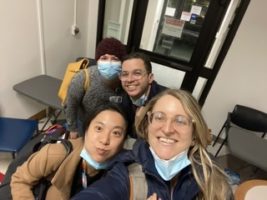 Lianna F. Wood, MD ’17, PhD ’15 (pathobiology)
Lianna F. Wood, MD ’17, PhD ’15 (pathobiology)
“I am finishing up my first year in Boston as a pediatric GI fellow at Boston Children’s after completing pediatric residency at Montefiore in the Bronx. Very excited to be returning to the lab this summer to continue my work on immunological implications of pediatric malnutrition.”
Lindsay Pino, PhD ’09 recently had the pleasure of being a featured guest speaker during the 2024 Biomedical PhD Hooding Ceremony. This was an especially meaningful opportunity for Lindsay as she had a highly positive experience during her time at the UW School of Medicine and feels that that our school provides a high level of scientific training that often far exceeds competing institutions. Lindsay began a post-doc in Pennsylvania after defending her PhD from Genome Sciences in the UW School of Medicine, however after one year COVID changed everything and she ended up dropping the remainder of her postdoc and starting her own company, Talus Bioscience. As co-founder and CTO of Talus Bio, she is using her PhD experience to develop small molecule therapeutics for cancer. Lindsay has returned to the Seattle area and now lives in the city with her husband and son.
Residents and Fellows
1960
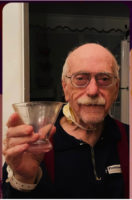 Dale E. Minner, MD, Res. ’60
Dale E. Minner, MD, Res. ’60
“I moved to Ithaca, NY, three years ago when my daughter Jennifer was granted tenure at Cornell University in the College of Art, Architecture and Planning. She graduated from the University of Washington with a degree in anthropology. I fully retired in 2002 from the occupational medical program of Mercy Hospital in Iowa City.”
1966
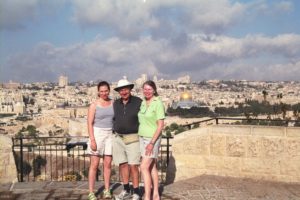 Robert A. Gutman, MD, Res. ’66 (internal medicine), Chief Res. ’69, and Larua E. Gutman, MD, MS ’68 (epidemiology), Res. ’69 (pediatrics)
Robert A. Gutman, MD, Res. ’66 (internal medicine), Chief Res. ’69, and Larua E. Gutman, MD, MS ’68 (epidemiology), Res. ’69 (pediatrics)
“Laurie and I met on the first day of internship in the laundry while on “the tour”. She trained in pediatrics and infectious disease and I in internal medicine and nephrology. We recall with love such people as Wedgewood, Dorfman, Scribner. We came to Duke in 1971 and are now retired, healthy, and living in Durham. It has been a really good life, and we attribute much of it to UW. We have been highly regarded as good teachers.”
1970
Ted Rothstein, MD, Res. ’70 (neurology)
“For the past 17 years, I have been on faculty at George Washington University in Washington, DC. I am a professor of neurology and the director of the Multiple Sclerosis Clinical Care and Research Center. I continue to publish articles concerning the role of SSEP [somatosensory evoked potential] in evaluating post-anoxic coma and on grey matter changes in MS.”
1976
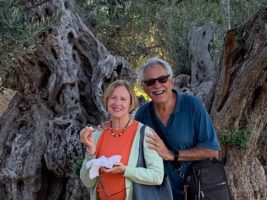 James Charney, MD, Res ’76 (psychiatry/behavioral sciences)
James Charney, MD, Res ’76 (psychiatry/behavioral sciences)
“we loved our time in Seattle and thought that would be our home. But family ties drew us back East and instead we spent close to 40 years in New Haven. I had an office practice in family and child psychiatry, taught at the Medical School at Yale, and consulted to local public schools and Choate Rosemary Hall, a private high school nearby. For 15 years I taught my Madness at the Movies seminar at Yale College. It used classic films to explore the experience of serious mental illness, a melding of my interest in psychiatry and my love of the movies. It was very popular, with more than 100 students applying each year for the 25 spaces in the class. Cross-listed with the Psychology and Film Studies departments, I loved teaching it.
My wife, Diane, was a devoted teacher of French at Yale and also enjoyed being a Writing Tutor there, a position that gave her a chance to follow students throughout their four years at the College, supporting their writing in all the courses that required it. One of the better programs at Yale.
Since I retired from my psychiatry office practice, Diane and I live half each year at our home in the countryside outside Orvieto, Italy. To keep my hand in (and my mind from turning to mush) for 6 years I was the psychiatric consultant to the St Stephens School in Rome (an English language private high school). I have taught versions of my Yale College course, Madness at the Movies, at the American University in Rome, Arcadia University in Rome, and the University of Ljubljana in Slovenia (where our son, Noah, lives with his family).
Diane keeps busy gardening, I do a lot of cooking, and we harvest our olives each November, enjoying the special pleasure of having our own oil. We visit friends here, explore Italy, eat very well and take advantage of being in Europe with visits to friends in the UK, the Netherlands, and France. Covid has slowed that down but not stopped it. We saw the wonderful Christo wrapping of the Arc de Triomphe in Paris this past September, before things locked down, catching up with friends while we were there.
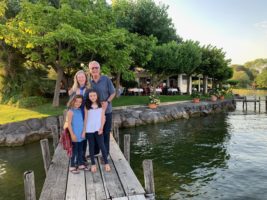 Diane published her first book last March, a literary memoir called Letters to Men of Letters. She writes letters to the authors who have shaped her, mostly French but not all. She also writes to Christo (we are fans), Leonard Cohen, and her father. She doesn’t expect any of them to write back (though Christo and Andre Aciman, another of her authors, did). She also writes a delightful blog called In Love With France, At Home in Italy, about our adventures as expats.
Diane published her first book last March, a literary memoir called Letters to Men of Letters. She writes letters to the authors who have shaped her, mostly French but not all. She also writes to Christo (we are fans), Leonard Cohen, and her father. She doesn’t expect any of them to write back (though Christo and Andre Aciman, another of her authors, did). She also writes a delightful blog called In Love With France, At Home in Italy, about our adventures as expats.
I am at the copy-editing stage of my first book, based on my Yale course, cleverly called Madness at the Movies, too. It will be published by Johns Hopkins University Press this coming Fall. I have loved the writing, encouraged by Noah, who is a professional writer with a specialty in art crime. He has some 18 books to his credit so far, writes occasional columns for The Guardian newspaper and The Washington Post, and is frequently a talking head on BBC documentaries. We visit him and his wife, Urska, and their adorable girls, Izabella and Eleonora (ages 7 and 9) as often as we can when we are in Italy. They are a fairly easy 7 hour drive away; a long enough drive to enjoy an audiobook. Middlemarch, which we loved, took a round-trip and a half to finish!
When we are not in Italy we return to New Haven and look forward to the culture Yale provides, seeing friends and family there, and eating the foods we can’t get here—like Thai, Chinese, BBQ, hot-buttered lobster rolls, and more. I do live to eat, and Italy provides awfully good eating. But after a while you crave a different food profile. New Haven is a mecca for different cuisines.
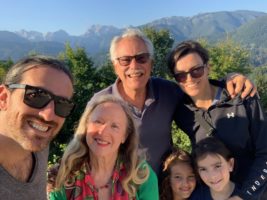 We have been lucky to stay healthy and so far to avoid COVID. Italy has done a very good job with this pandemic, with low case numbers even with the recent surge. Everyone follows the rules, and the vaccine green pass has made vaccination almost universal, since you need it now to eat in a restaurant, go to the theater or a museum, and lately as things got stricter to control omicron, even to get a coffee. We feel quite safe, and very lucky.
We have been lucky to stay healthy and so far to avoid COVID. Italy has done a very good job with this pandemic, with low case numbers even with the recent surge. Everyone follows the rules, and the vaccine green pass has made vaccination almost universal, since you need it now to eat in a restaurant, go to the theater or a museum, and lately as things got stricter to control omicron, even to get a coffee. We feel quite safe, and very lucky.
Photos: (top) Diane and I are in Agrigento in Sicily, standing in front of a 500 year old olive tree, (middle) with our grand-daughters at a favorite trattoria on nearby Lago Bolsena; (bottom) Noah, Urska, Izabella and Eleonora, Diane and me at Stari Grad Castle above the village of Kamnik in Slovenia”
1977
Toby L. Simon, MD, Fel. ’77 (hematology)
“I was a hematology-oncology fellow, 1974–1977. I am currently a senior medical director with CSL Plasma, a subsidiary of the global biopharmaceutical company CSL Behring, and a clinical professor of pathology at the University of New Mexico School of Medicine. I have served as an editor of Rossi’s Principles of Transfusion Medicine through all its editions. I am the senior editor of the sixth edition, published July 2022. This is the most comprehensive medical text in this particular field.”
1978
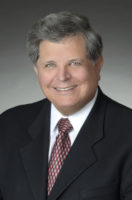 William L. Oppenheim, M.D., Res. ’74 (Orthopedic Surgery), director of the UCLA / Orthopaedic Institute for Children’s Cerebral Palsy Program, received the 2018 American Academy of Pediatrics Distinguished Service Award for orthopedics at their Annual Meeting in November 2018. Dr. Oppenheim is also a former recipient of the American Academy for Cerebral Palsy’s Lifetime Achievement Award. He is a past president of the American Academy for Cerebral Palsy and Developmental Medicine as well as the Western Orthopaedic Association’s Los Angeles chapter. He is in his 40th year at UCLA and continues as the Jones Kanaar Professor and Emeritus Chief of Pediatric Orthopaedics. submitted 1/31/19
William L. Oppenheim, M.D., Res. ’74 (Orthopedic Surgery), director of the UCLA / Orthopaedic Institute for Children’s Cerebral Palsy Program, received the 2018 American Academy of Pediatrics Distinguished Service Award for orthopedics at their Annual Meeting in November 2018. Dr. Oppenheim is also a former recipient of the American Academy for Cerebral Palsy’s Lifetime Achievement Award. He is a past president of the American Academy for Cerebral Palsy and Developmental Medicine as well as the Western Orthopaedic Association’s Los Angeles chapter. He is in his 40th year at UCLA and continues as the Jones Kanaar Professor and Emeritus Chief of Pediatric Orthopaedics. submitted 1/31/19
1979
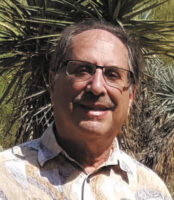 Allen M. Sussman, MD., Fel. ’79 (endocrinology)
Allen M. Sussman, MD., Fel. ’79 (endocrinology)
“After retiring from clinical practice and an extensive clinical research career, I am having a book published, called Saving the Art of Medicine: Observations of a Practitioner. The book is comprehensive and multifaceted, delving into a multitude of phenomena, such as the rigor as well as limitations of scientific study and statistical analyses, non-pharmacological pathways to health, the doctor-patient connection and the power of our minds. Further details can be found at savingtheartofmedicine.com. I also want to recognize Dr. Irl Hirsch for being such an inspiration as the perfect blend of clinician, researcher and teacher.”
1980
Carlos A. Gutierrez, MD, Res. ’80 (pediatrics)
“From the time I was exposed to a true free standing Children’s Hospital in my third year of medical school, and subsequently completing my 3 year Pediatrics Residency at Seattle Children’s Hospital, I knew then that my goal as a Pediatrician would be to lead the effort to build my community of El Paso, Texas its first free standing not for profit Children’s Hospital. I began my fight in 1980 (I was 30 years old at the time). Our own El Paso Children’s Hospital eventually opened its doors on February 14th (Valentine’s Day in the year 2012. We will be celebrating 10 years as a free-standing Children’s Hospital in our community this coming February. I take immense pride every time I walk into our beautiful hospital knowing that I was a major force in helping to make this wonderful dream a reality. The Seattle Children’s Hospital is a major reason that our hospital became a reality. It is at your amazing facility that I picked up many of the ideas that we set in place in establishing our hospital. Your training and support were major reasons of what gave me the fight and energy to pursue my dream for 32 years of my life. Finally, it was the tremendous experience and training at the Seattle Children’s Hospital that allowed me to be known in our community as the “Father of the El Paso Children’s Hospital.” Thank you to the University of Washington Medical School and thank you to the Seattle Children’s Hospital for allowing me to train and learn at your excellent medical center.”
David E. Wisner, MD, Res. ’80 (internal medicine), Fel. ’80 (rheumatology)
“I completed my fellowship in rheumatology in 1981 and began a solo practice till 2016, when I retired. It was a perfect subspecialty for me. My practice was in Bellingham, Washington. Before residency and fellowship at the University of Washington, I spent three years in the Indian Health Service on the Navajo and Alaska reservations. Great years. Skiing was my main passion until two years ago, along with tennis and gardening. I feel incredibly lucky to have been accepted to and graduated from the University of Wisconsin. It was a good time to be in medicine. When electronic medical records came, I knew it was my time to go. Where did all the years go?”
1981
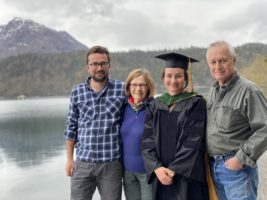 Molly B. Southworth, MD, Res ’81 (internal medicine), MPH
Molly B. Southworth, MD, Res ’81 (internal medicine), MPH
“My husband Bret Haering and I recently celebrated med school graduations with two of our three children on Kachemak Bay: Celia (UCSF 2020) and Don (UW/WWAMI 2021). In addition, our older son Russell and his wife Natasha Selvey have added two grandchildren to the family! Since completing >30 years as an internist & endocrinologist 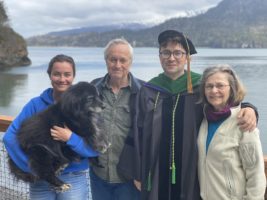 with the Alaska Tribal Health System, I have been focusing on my roles as Regent, American College of Physicians (ACP); Chair, ACP Volunteerism Committee; member, ACP Health and Public Policy committee; UAA/ WWAMI Denali College mentor; and board member for Skiku, an organization promoting ski opportunities in rural AK communities. https://skiku.com. I hope these activities will contribute to a better health care system and to improved health for all. Am also loving more time for family, reading, and outdoor activities. Come visit Alaska! Molly Southworth, MD, MPH, MACP”
with the Alaska Tribal Health System, I have been focusing on my roles as Regent, American College of Physicians (ACP); Chair, ACP Volunteerism Committee; member, ACP Health and Public Policy committee; UAA/ WWAMI Denali College mentor; and board member for Skiku, an organization promoting ski opportunities in rural AK communities. https://skiku.com. I hope these activities will contribute to a better health care system and to improved health for all. Am also loving more time for family, reading, and outdoor activities. Come visit Alaska! Molly Southworth, MD, MPH, MACP”
1984
Kathleen R. Bell, MD, Res. ’84 (physical medicine and rehab)
“I stepped down as chair of the PMR Department at UT Southwestern and am continuing there as professor, concentrating on research and patient care. Losing hundreds of meetings and spreadsheets has been just delightful! Over the next few years, will be slowly relocating from Dallas to Bellingham to be closer to family (and grandchildren).”
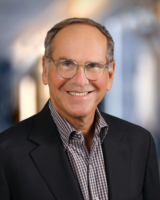 Todd A. Strumwasser, MD, Res. ’84 (anesthesiology)
Todd A. Strumwasser, MD, Res. ’84 (anesthesiology)
“I transitioned from clinical practice of anesthesiology at Swedish Medical Center in Seattle, Washington, in 2010 to being first the vice president of medical affairs, then chief operating officer, then chief executive at Swedish. I then worked as the SVP for the SF Bay Area for Dignity Health, beginning in 2015. Within a few years, I was promoted to president of The Northern California Division (13 hospitals), and retired in November 2022. Currently lives in the SF Bay Area, and serve on the Board of Trustees and chairs the Quality Committee for PeaceHealth in Vancouver, Washington.”
1985
Phillip F. Chance, MD, Res. ’85 (neurology), Fel. ’85 (medical genetics)
“Retired from the UWSOM in 2010, I am enjoying returning to music, as a founding member (contrabass clarinet) and technical director of the Seattle Wind Symphony. I am also the regular audio engineer for a dozen orchestral and choral groups in the greater Seattle area, producing recordings for archival purposes, CD production and FM broadcast.”
1987
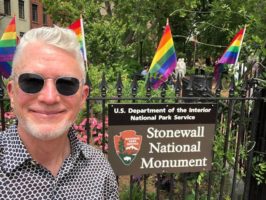 Steven R. Hamilton, MD, Res. ’87 (internal medicine), Res. ’90 (neurology)
Steven R. Hamilton, MD, Res. ’87 (internal medicine), Res. ’90 (neurology)
“This has been a busy year for my husband, Paul Neal, and me. We are remodeling our farmhouse in Southwest France — remotely, for the most part — and it has almost come to completion. I continue to practice neuro-ophthalmology at Swedish Neuroscience Institute in Seattle. My oldest daughter, Emily, has a thriving practice in L.A. as a cognitive therapist. My youngest daughter, Diana, is married and expecting our first grandchild in September. She is a neurosurgical outpatient nurse at MGH in Boston. My mother will turn 100 years old on August 10. Looking forward to more travel to see family and our French farmhouse this fall.”
1990
Richard D. Gibbs, MD, Res. ’90 (family medicine)
“How time flies! And we hope the past three decades have been happy and productive for everyone that we had the fortune to train with in UW family medicine! Those years have served us well. We never could have pursued our goals without the breadth and depth of family medicine. Tricia and I are in our 30th year of doctoring and administrating the San Francisco Free Clinic. In our non-free clinic time, Tricia is a director for San Francisco’s Hardly Strictly Bluegrass Festival, and I continue as the supervising physician for the San Francisco Ballet. Our five children are grown and have flown the coop, and it’s time to find the next generation of leadership at the clinic, the ballet and the bluegrass festival. We fondly think of you all and send our very best wishes!”
1991
Jeanne-Marie Maher, M.D., Res. ’91 (internal medicine)
“After 20 years of internal medicine, went back for fellowship training at the National Institutes of Health in Palliative Medicine. Now Medical Director Palliative Medicine at Catholic Medical Center Manchester NH.”
1994
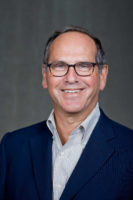 Todd Strumwasser, M.D., Res. ’94 (anesthesiology)
Todd Strumwasser, M.D., Res. ’94 (anesthesiology)
“I became the SVP of Operations for the San Francisco Bay Area for Dignity Health in Feb. 2015, and now the President of the Northern California Division of CommonSpirit Health. I am responsible for both the Bay Area and North State Service Areas, with responsibility over an assigned portfolio of healthcare assets which includes acute care, ambulatory outpatient services, philanthropy, physician alignment and employment business models, as well as other alternative healthcare delivery systems. I oversee seven hospitals, including St. Mary’s Medical Center, Saint Francis Memorial Hospital, Sequoia Hospital, Dominican Hospital, Mercy Medical Center Redding, St Elizabeth Community Hospital and Mercy Medical Center Mt. Shasta, and lead this Division to ensure optimal strategic positioning and operating performance.”
1996
Albert Yan, MD, Res ’96 (pediatrics)
“Stepped down as chief of dermatology at the Children’s Hospital of Philadelphia in 2020, and while it’s still my day job, I have been devoting more time to a startup project called EDVYCE, an app to help facilitate informal ‘curbside’ communication and education among medical clinicians. We’ve been growing by word of mouth (now 500+) and would love to have more clinicians involved. Please visit us at edvyce.health to learn more!”
2009
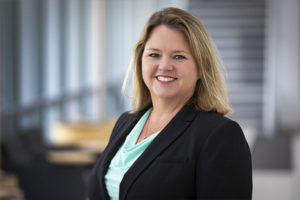 Kristina H. Deeter, MD, Fel. ’09, was named by the University of Nevada, Reno School of Medicine (UNR Med) as vice chair of Pediatrics at UNR Med and associate physician-in-chief of Renown Children’s Hospital.
Kristina H. Deeter, MD, Fel. ’09, was named by the University of Nevada, Reno School of Medicine (UNR Med) as vice chair of Pediatrics at UNR Med and associate physician-in-chief of Renown Children’s Hospital.
In her new role, Dr. Deeter will collaborate with School of Medicine leadership and the administration of Renown Children’s Hospital to develop and improve pediatric programs and training for UNR Med medical students. As vice chair, she will support the growth of both acute and outpatient pediatric programs, assist with the development of a pediatric residency program, and continue to support highly effective clinical pediatric teams.
2013
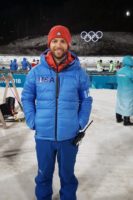 Brett G. Toresdahl, M.D., Res. ’13 (Family Medicine), Fel. ’13 (Family Medicine-Sports Medicine)
Brett G. Toresdahl, M.D., Res. ’13 (Family Medicine), Fel. ’13 (Family Medicine-Sports Medicine)
“I traveled to Korea to support Team USA as team physician for the U.S. biathlon at the PeyongChang Winter Olympic Games. I have worked with the team since 2014, when I moved to New York to begin my practice in primary-care sports medicine at the Hospital for Special Surgery.”

